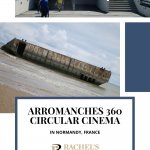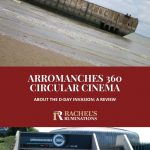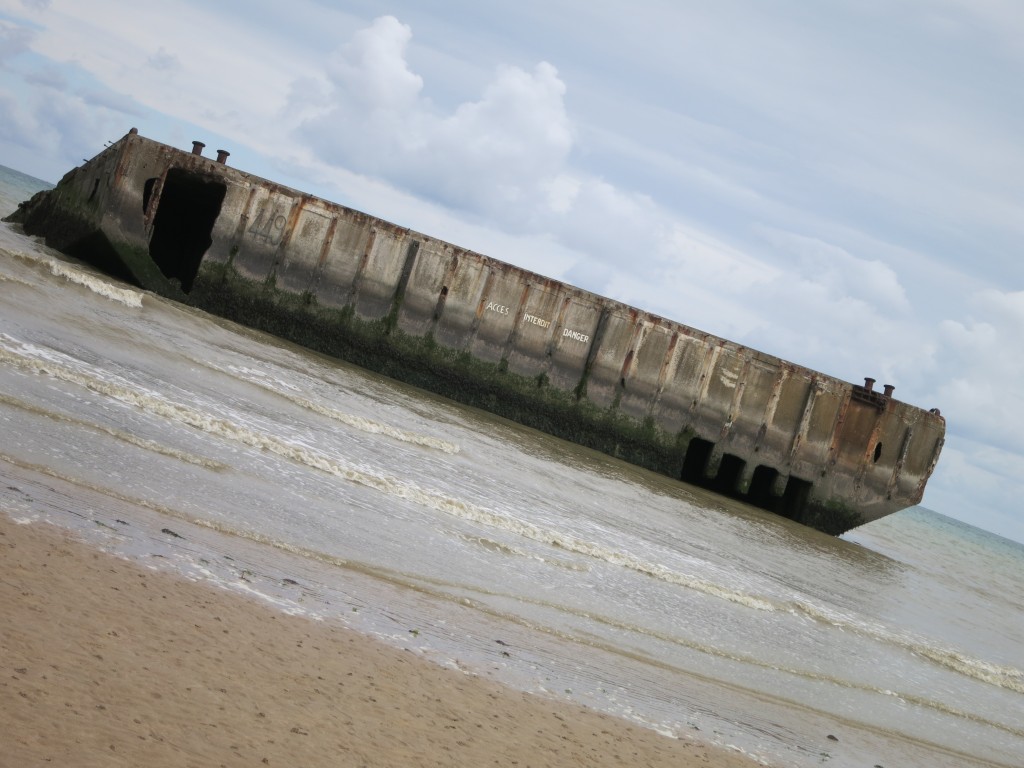Arromanches 360 circular cinema: A review
My oh-so-laconic son, on exiting Arromanches 360, remarked, “Even I found this one moving.” Take my word for it: that was high praise indeed, coming from my perpetually-unimpressed teenager.
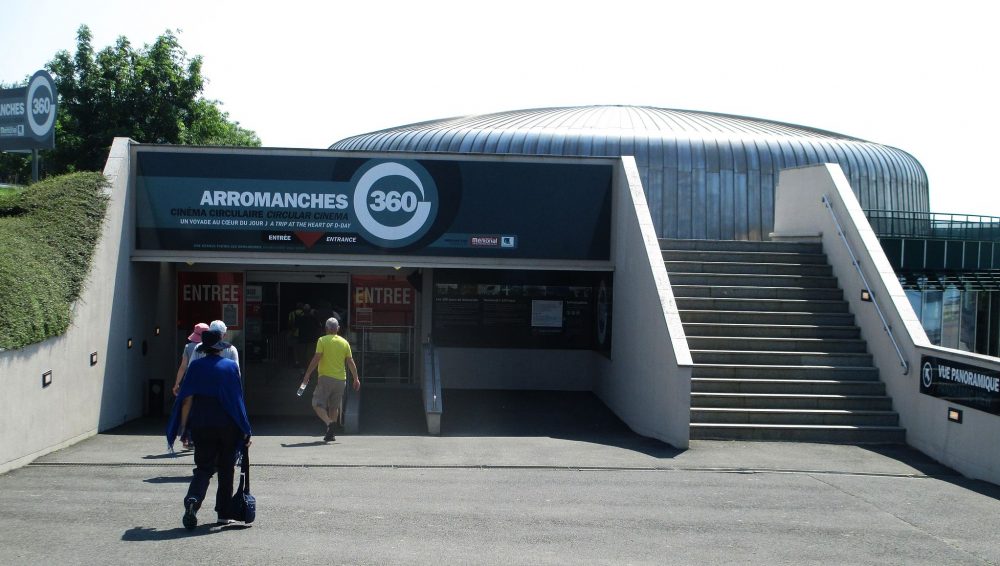
Disclosure: This article contains affiliate links. If you click on one and make a purchase, I will receive a small commission. This will not affect your price.
What is Arromanches 360?
Arromanches 360 is a circular movie. In other words, the audience stands inside a circle of nine screens. Stills and films from the D-Day invasion are projected in all directions.
Despite having just visited two other D-Day museums, I didn’t really have any emotional understanding of D-Day. I understood the factual history: what happened and when. But watching the film at Arromanches 360 allowed me to gain an inkling of how it might have felt to be a civilian caught up in the invasion or a soldier taking part in it: the fear, the chaos, the noise, the dust. It was all there, happening all around me.
Use this link to reserve your tickets to Arromanches 360!
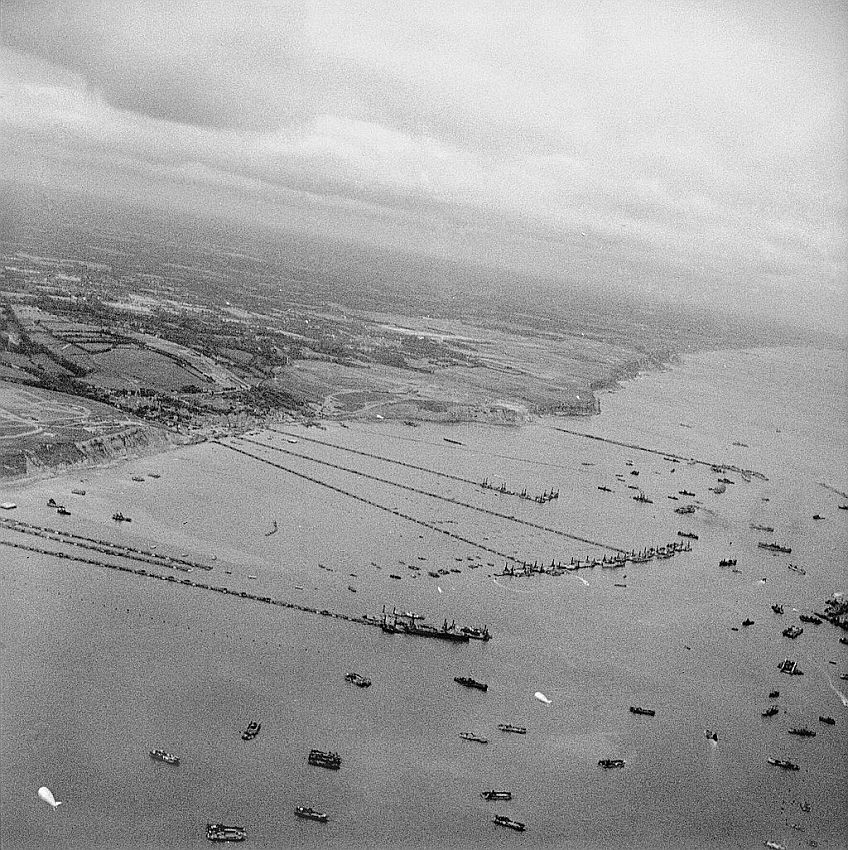
Is Arromanches 360 worth visiting?
The circular film at Arromanche 360 is definitely worth seeing. I don’t know if any of the other sites would touch my son (and me) the way this one did. Our limited views (the two museums we did visit) were much too dry and fact-filled to have that effect. While Arromanches 360 is limited in terms of imparting information, that makes it easier to simply feel how the enlisted men must have felt: those who were taking part but didn’t necessarily know the plans or strategies involved.
What I’d recommend is to learn something about the D-Day invasion first. That could be at another museum (see the section below) or just through doing a bit of reading. Once you have a general understanding, go to Arromanches 360. Afterwards, take a walk along the beach in Arromanches. There you’ll see what’s left of the artificial harbor the allies built to carry out the invasion. And a stroll along a beach is always a great way to process your thoughts.
Arromanches 360: Chemin du Calvaire in Arromanches-les-Bains. Open daily 9:30-18:00 in June-August, 10:00-18:00 in September, 10:00-17:00 in October-December. From January 2025 opening times may change, so check ahead on their website. Tickets €7: Click here to purchase tickets.
Other D-Day-related sites
Besides the Battle of Normandy Memorial Museum at Bayeux, which I reviewed rather negatively, most of the sites along the D-Day beaches seem to focus on just one small aspect of the invasion. We had also visited the Musée du Débarquement, which I suppose translates as the Museum of the Debarkation. It only covered the construction of the artificial harbor at Arromanches and how the allies created floating bridges to allow swift supply flow to the troops.
The Normandy coast has other narrowly-focused museums that we didn’t visit:
- The Canadian Museum at Juno Beach focuses on the role of Canadian volunteers in the war.
- The Pegasus Memorial is a museum about the men of the 6th British Airborne Division.
- The Utah Beach Museum looks primarily at the American landing at Utah Beach.
- The Museum of the Merville Battery: German bunkers.
- The Radar Museum 1944 in Douvres.
- The Overlord Museum on Omaha Beach seems to cover a bit more of the story than most.
And there are more. Obviously, I can’t make any recommendations as to which museums are best and which to avoid.
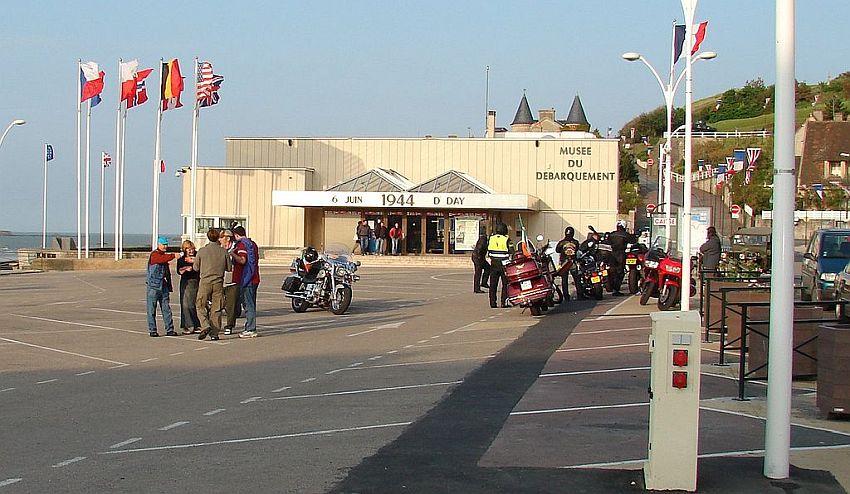
If all of these different organizations worked together to come up with one huge central, effectively organized museum, instead of these separate, chaotic, limited ones, they would be able to do a much more effective job of teaching about D-Day and its importance. As it stands now, it would take an aficionado many days devoted solely to studying the D-Day invasion to do it justice, and we’re not such aficionados.
Here are some other articles you might find interesting:
If you’re planning to spend some time exploring the D-Day sights, use the map below to book your accommodations. I’ve centered it on Arromanches, but you can move it left or right or zoom it in or out to see more options.
Have you visited the D-Day beaches? Which museums or other sights do you recommend seeing?
Last updated October 2024.
My travel recommendations
Planning travel
- Skyscanner is where I always start my flight searches.
- Booking.com is the company I use most for finding accommodations. If you prefer, Expedia offers more or less the same.
- Discover Cars offers an easy way to compare prices from all of the major car-rental companies in one place.
- Use Viator or GetYourGuide to find walking tours, day tours, airport pickups, city cards, tickets and whatever else you need at your destination.
- Bookmundi is great when you’re looking for a longer tour of a few days to a few weeks, private or with a group, pretty much anywhere in the world. Lots of different tour companies list their tours here, so you can comparison shop.
- GetTransfer is the place to book your airport-to-hotel transfers (and vice-versa). It’s so reassuring to have this all set up and paid for ahead of time, rather than having to make decisions after a long, tiring flight!
- Buy a GoCity Pass when you’re planning to do a lot of sightseeing on a city trip. It can save you a lot on admissions to museums and other attractions in big cities like New York and Amsterdam.
Other travel-related items
- It’s really awkward to have to rely on WIFI when you travel overseas. I’ve tried several e-sim cards, and GigSky’s e-sim was the one that was easiest to activate and use. You buy it through their app and activate it when you need it. Use the code RACHEL10 to get a 10% discount!
- I’m a fan of SCOTTeVEST’s jackets and vests because when I wear one, I don’t have to carry a handbag. I feel like all my stuff is safer when I travel because it’s in inside pockets close to my body.
- I use ExpressVPN on my phone and laptop when I travel. It keeps me safe from hackers when I use public or hotel wifi.


